I also noticed that the catalog makes no mention of snakes, which further complicate fence installation.
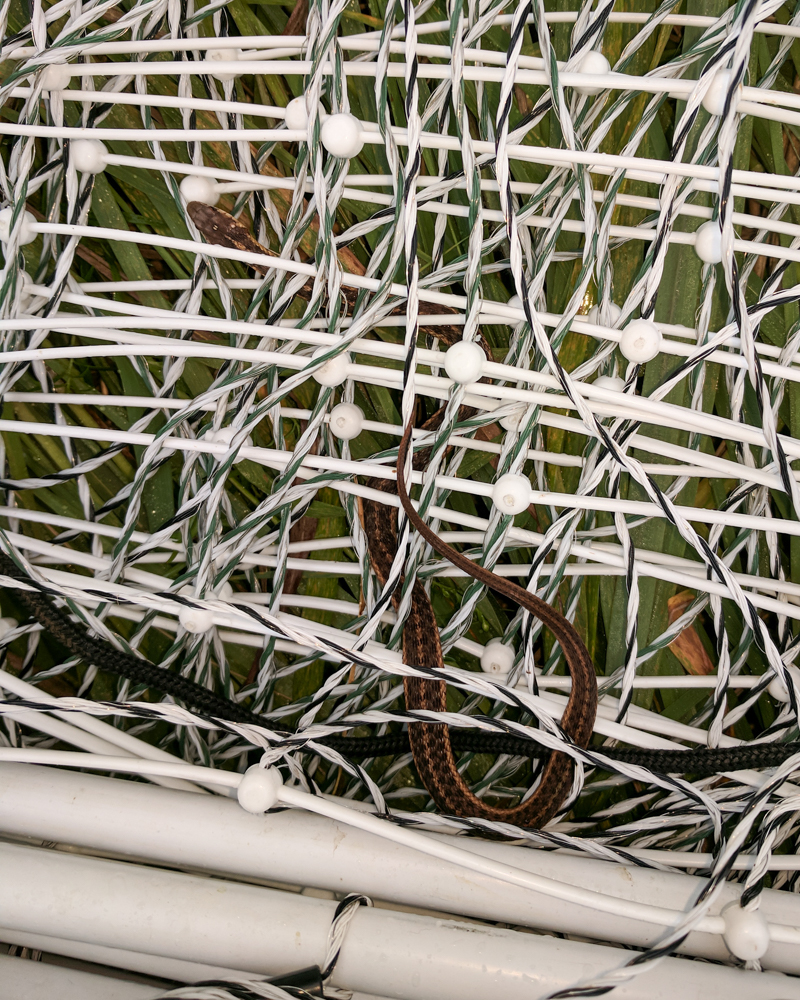
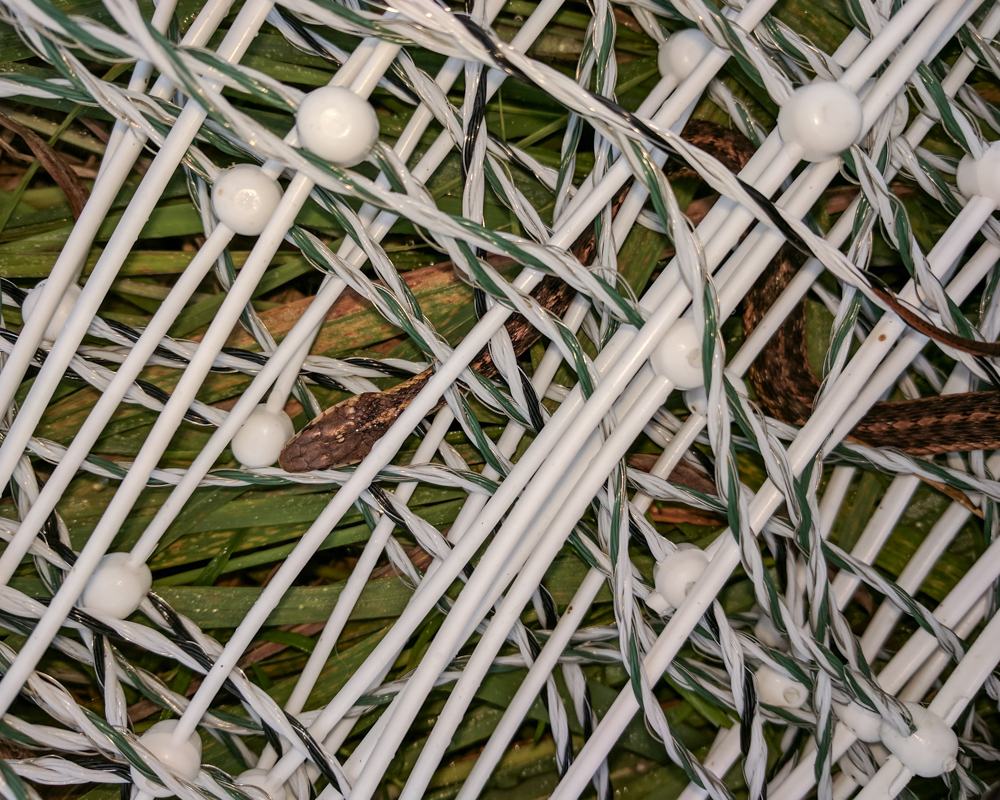
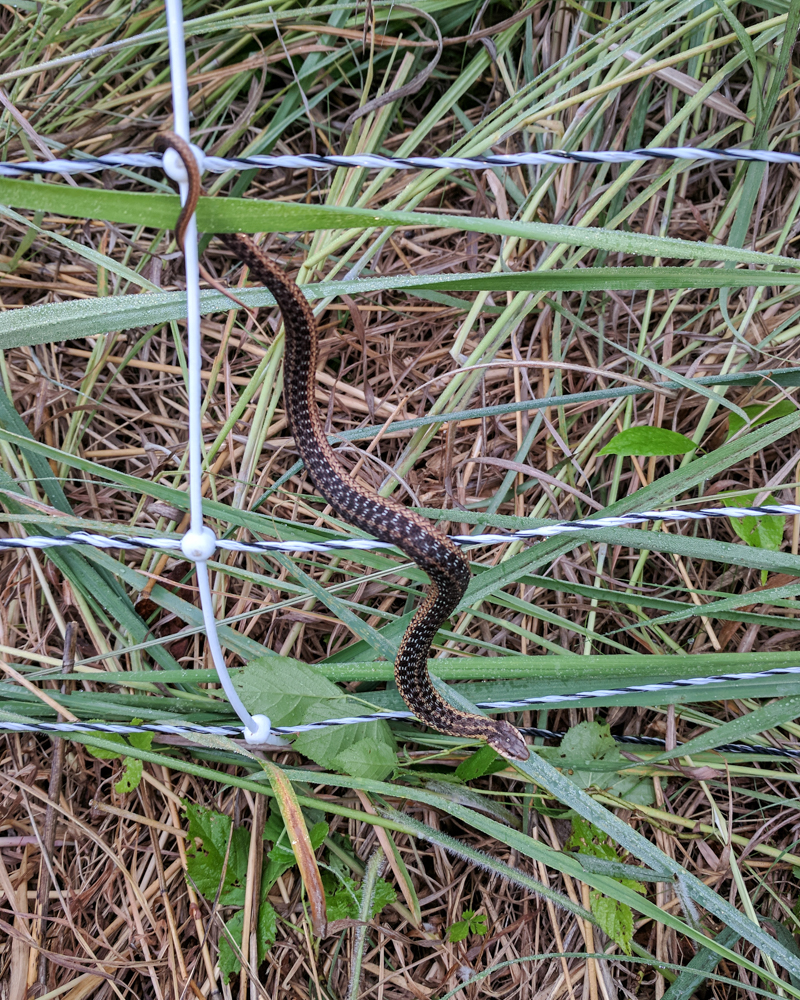
I also noticed that the catalog makes no mention of snakes, which further complicate fence installation.



Apologies to ophidiophobes for today’s post…
I was taking apart some old garden fencing at the Miles’s place this afternoon, finding all manner of interesting bugs between layers of boards, but I was quite surprised to find a vertebrate hiding out about 18 inches off the ground.
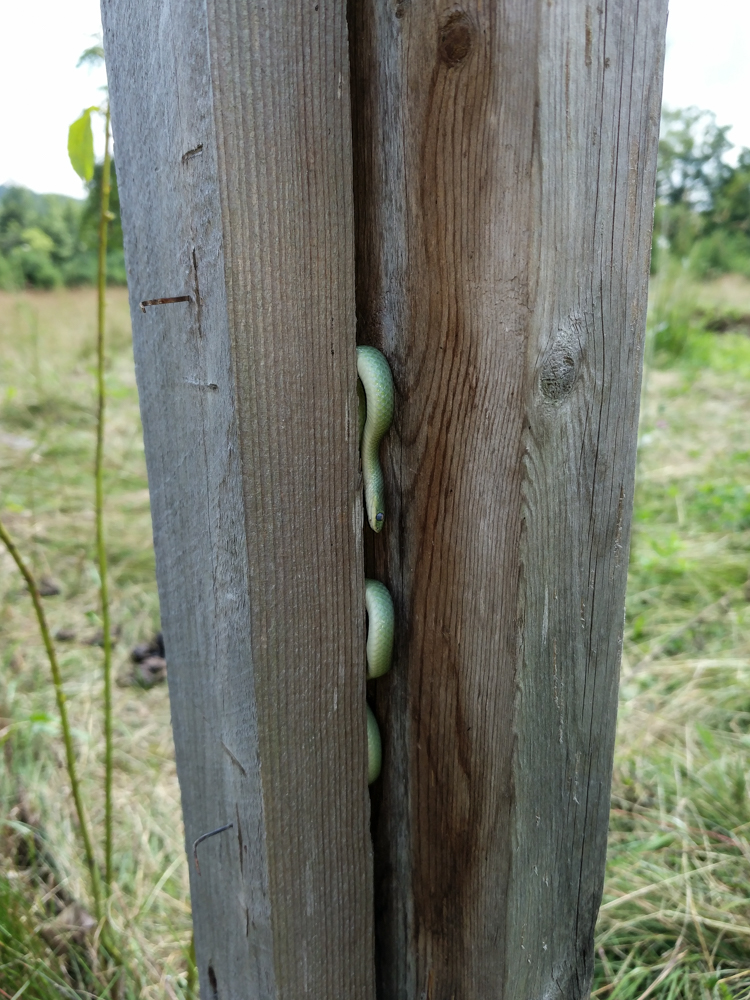
I learned that it’s a smooth green snake, Opheodrys vernalis, a species of special concern in New Hampshire. I didn’t want to cause it any harm when I dismantled the fencepost it was inhabiting, so I encouraged it to move along.
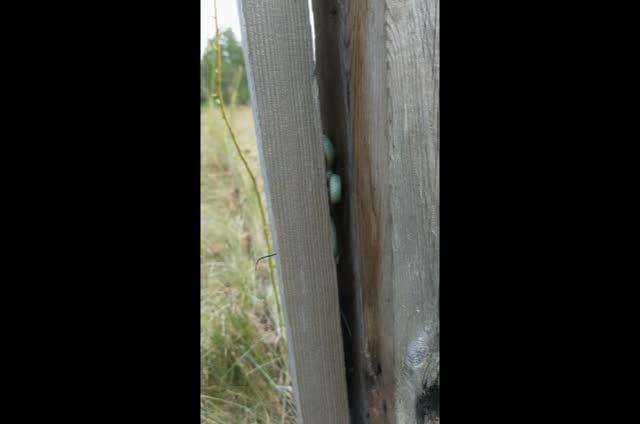
This snake is caught in a bit of a catch-22, as its decline is partly attributed to loss of open grassland habitat, but both grazing and mowing, the primary ways of keeping land from reverting to forest, can kill it. Seems that cute and green is only protective for Muppets.
Tagged: fencepost, hiding, Hubbard Road, Miles, Opheodrys vernalis, pasture, Smooth green snake, snake
On my way to a job site yesterday, I saw a common snapping turtle (Chelydra serpentina) at the side of the road.
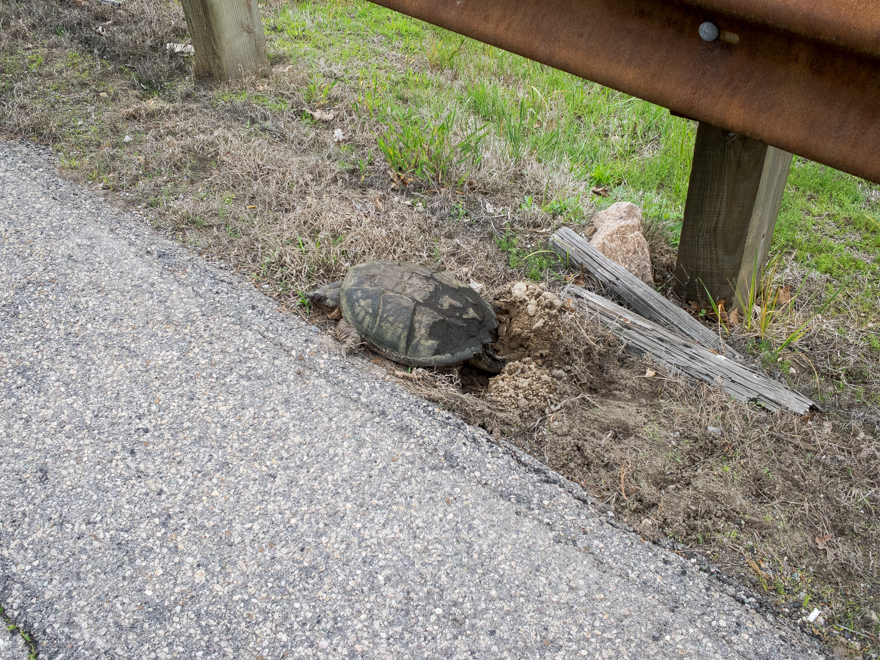 At first, I assumed that the turtle was trying to cross, so I pulled over to either try to dissuade her, or to play crossing guard, as the road was reasonably busy.
At first, I assumed that the turtle was trying to cross, so I pulled over to either try to dissuade her, or to play crossing guard, as the road was reasonably busy.
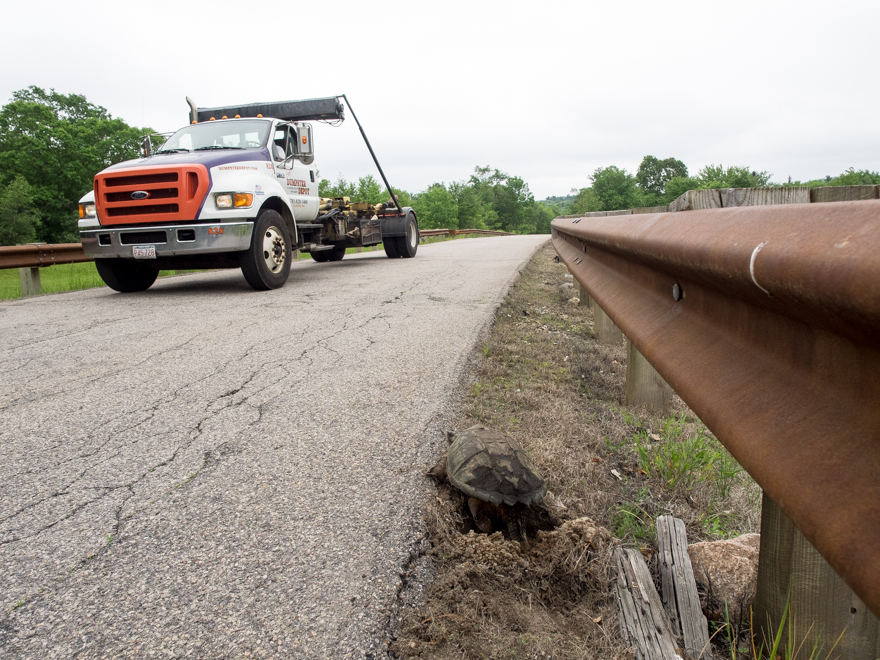
But as I got a closer look, it became clear that Ms. Turtle had chosen this particular roadside to lay her eggs. It seems that I came upon her as she was covering the clutch in the sandy soil.
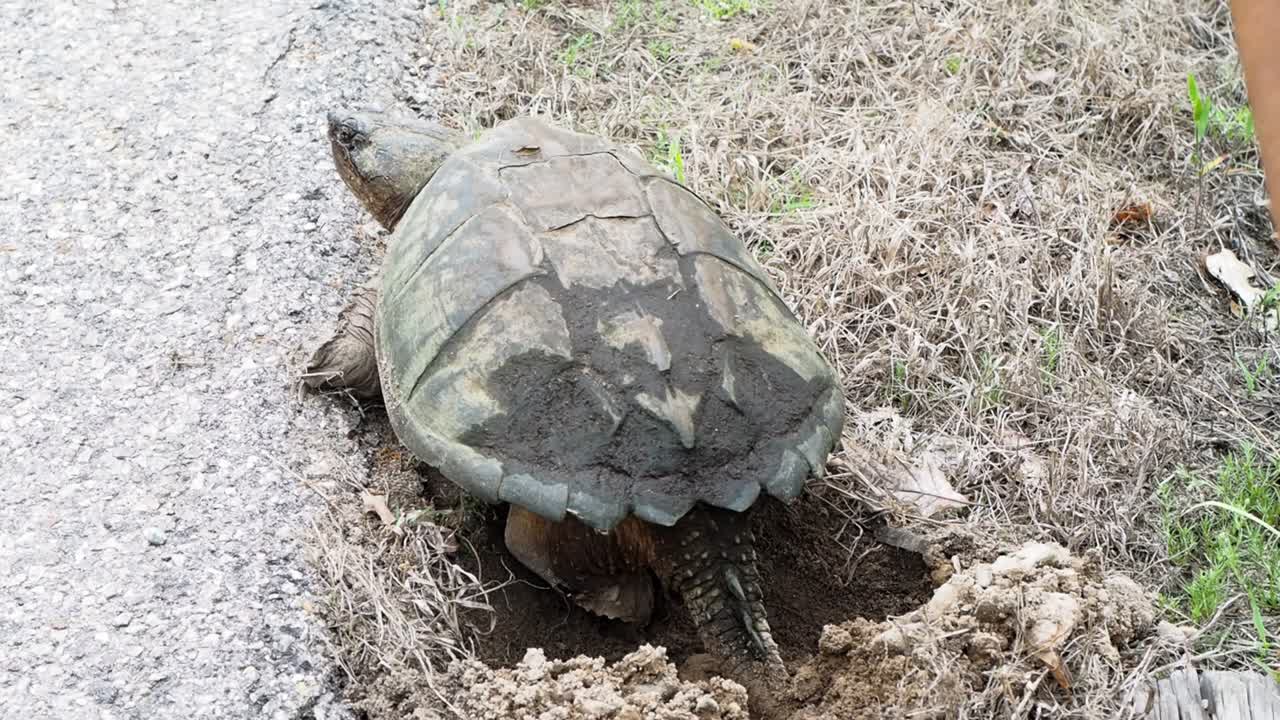
Her distracted condition afforded me the opportunity to photograph her more intimately than I might otherwise have dared.
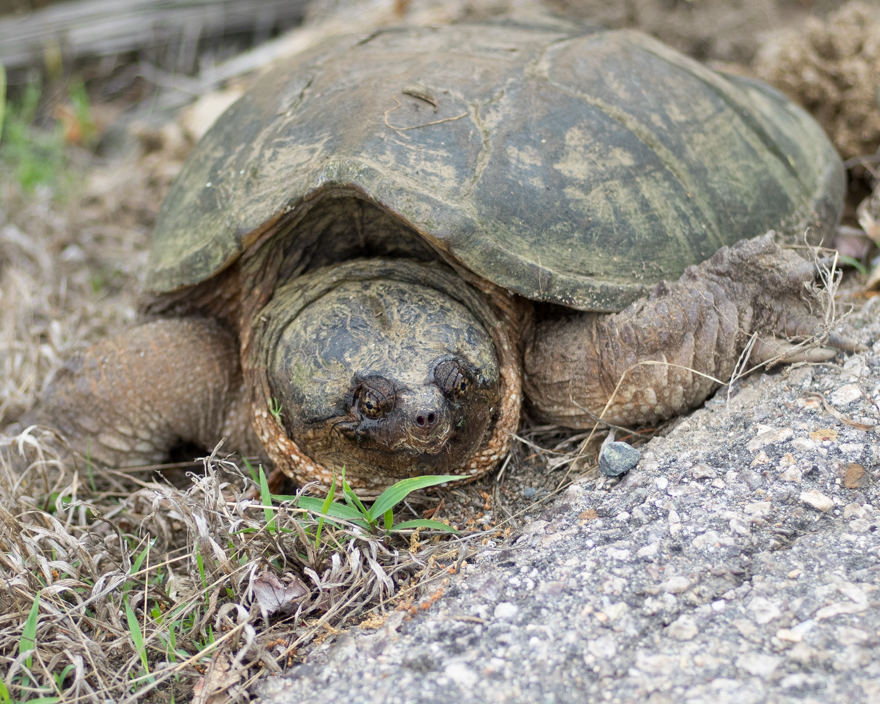
But I was still nervous on her behalf, and on behalf of her offspring. From my (admittedly mammal-centric) point of view, she had chosen a sub-optimal spot for her procreative efforts; though there was a small body of water below the road, there were also two lanes of approximately reptile-colored asphalt right beside the future hatchlings.
I returned a short time later, and she was gone, with no signs of an adverse event on the pavement. Only a close look revealed the location of the nest.
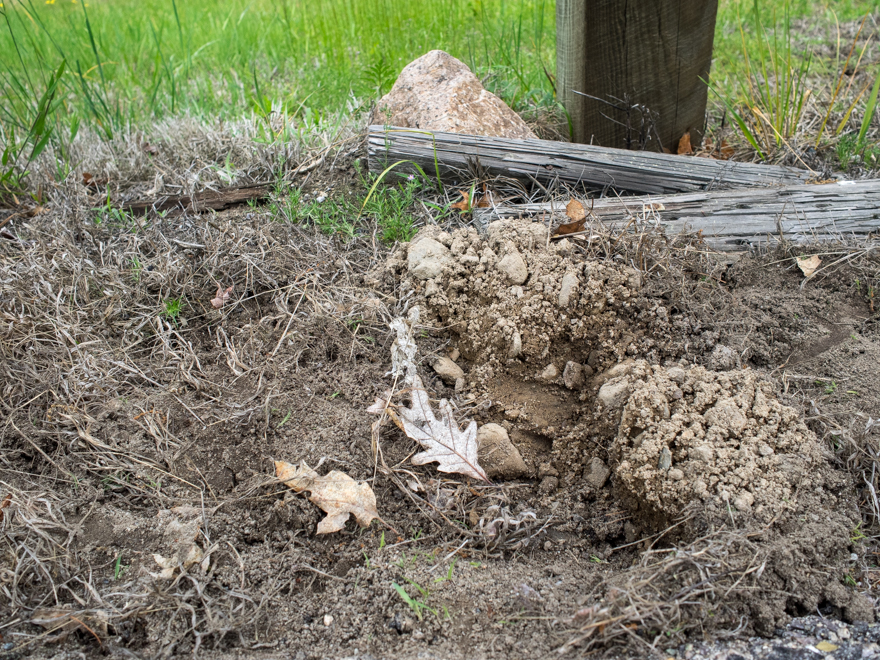
I would like to believe that snapping turtles have figured out a thing or two about staying alive over their eons of evolution — they are called “common” snapping turtles after all — and perhaps the newly-hatched young are instinctively driven to move toward the nearest water as soon as they emerge from their eggs. But it’s hard not to worry that the rate of change we have imposed on their environment vastly outstrips their ability to adapt to those changes.
Tagged: Chelydra serpentina, egg-laying, eggs, evolution, nest, reptile, road, snapping turtle, traffic